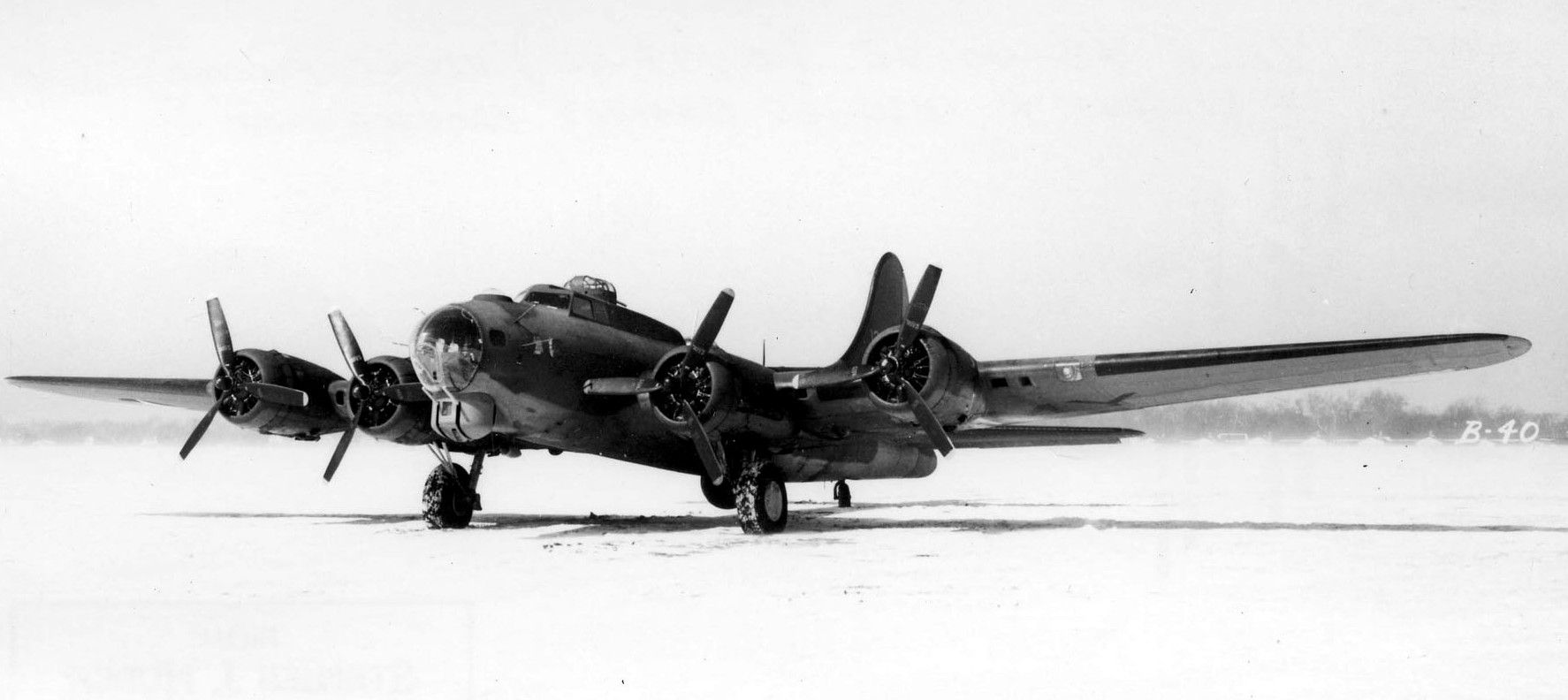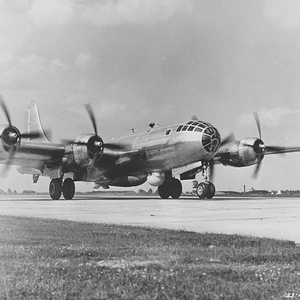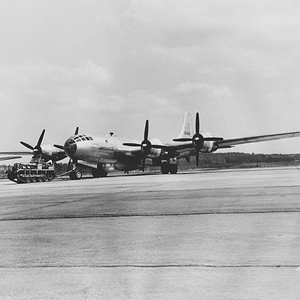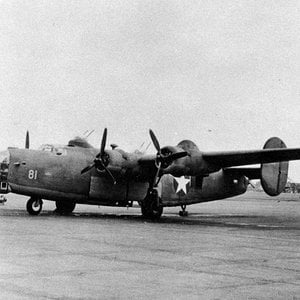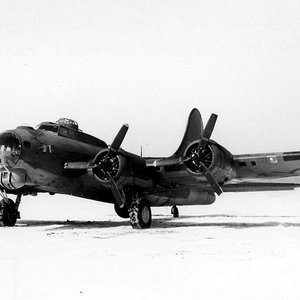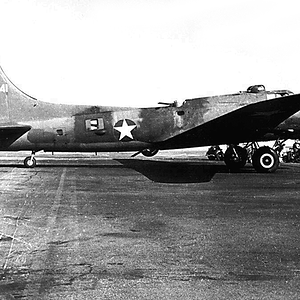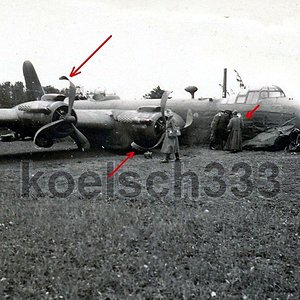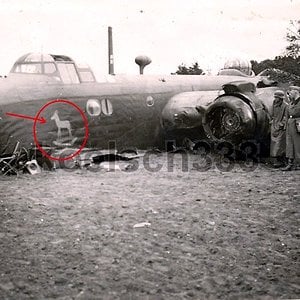Navigation
Install the app
How to install the app on iOS
Follow along with the video below to see how to install our site as a web app on your home screen.
Note: This feature may not be available in some browsers.
More options
You are using an out of date browser. It may not display this or other websites correctly.
You should upgrade or use an alternative browser.
You should upgrade or use an alternative browser.
The XB-40 was developed to test the bomber escort concept. Early in World War II, before long-range fighters like the P-51D became available, the Air Corps developed plans to modify bombers with additional defensive armament. These aircraft would accompany regular bomber formations and provide protection from attacking fighters. Unfortunately, the modified escort bombers were not maneuverable enough to protect large formations. They were also excessively tail heavy and overweight. A standard B-17F formation returning from a mission (after bomb release) outpaced the escort bombers. The YB-40 participated in only a few operational missions in mid-1943 before being withdrawn from service.
The prototype XB-40 was modified by Lockheed Vega (Project V-139) by converting the second production B-17F-1-BO (S/N 41-24341). Defensive armament consisted of 14 .50-cal. machine guns in seven gun positions: chin turret, two dorsal turrets, ball turret, two waist positions and the tail. The first flight of the XB-40 was on Nov. 10, 1942. Twenty service test aircraft were ordered (Vega Project V-140) as YB-40 along with four crew trainers designated TB-40. Because Vega had higher priority production projects, the YB-40/TB-40 assembly job was transferred to Douglas.
In the spring of 1943, the 327th Bomb Squadron of the 92nd Bomb Group, RAF Alconbury, was assigned 12 YB-40s for operational combat tests. The first mission was flown on May 29, 1943, and after less than 10 missions the aircraft were withdrawn from service. Most were converted back to the standard B-17F configuration.
The chin turret installation pioneered on the B-40 series aircraft was soon adopted for late model B-17Fs and became standard equipment on the B-17G.
Type Number built/
converted Remarks
XB-40 1 (cv) B-17F converted to bomber escort
YB-40 20 (cv) Service test version
TB-40 4 (cv) YB-40 crew training aircraft
TECHNICAL NOTES:
Armament: 14 .50-cal. machine guns standard, various numbers and types of machine guns and cannon were also tested
Engines: Four Wright R-1820-65 engines of 1,200 hp each
Maximum speed: 292 mph at 25,000 ft.
Cruising speed: 196 mph
Range: 2,260 miles
Service ceiling: 29,200 ft.
Span: 103 ft. 9 in.
Length: 74 ft. 9 in.
Height: 19 ft. 1 in.
Weight: 63,500 lbs. (maximum gross weight)
Crew: Nine
Serial numbers: XB-40 (B-17F-1-BO): 41-24341; YB-40 (B-17F-VE): 42-5732 to 42-5744, 42-5871, 42-5920, 42-5921, 42-5923 to 42-5925, 42-5927; TB-40 (B-17F-VE): 42-5833, 42-5834, 42-5872, 42-5926
The prototype XB-40 was modified by Lockheed Vega (Project V-139) by converting the second production B-17F-1-BO (S/N 41-24341). Defensive armament consisted of 14 .50-cal. machine guns in seven gun positions: chin turret, two dorsal turrets, ball turret, two waist positions and the tail. The first flight of the XB-40 was on Nov. 10, 1942. Twenty service test aircraft were ordered (Vega Project V-140) as YB-40 along with four crew trainers designated TB-40. Because Vega had higher priority production projects, the YB-40/TB-40 assembly job was transferred to Douglas.
In the spring of 1943, the 327th Bomb Squadron of the 92nd Bomb Group, RAF Alconbury, was assigned 12 YB-40s for operational combat tests. The first mission was flown on May 29, 1943, and after less than 10 missions the aircraft were withdrawn from service. Most were converted back to the standard B-17F configuration.
The chin turret installation pioneered on the B-40 series aircraft was soon adopted for late model B-17Fs and became standard equipment on the B-17G.
Type Number built/
converted Remarks
XB-40 1 (cv) B-17F converted to bomber escort
YB-40 20 (cv) Service test version
TB-40 4 (cv) YB-40 crew training aircraft
TECHNICAL NOTES:
Armament: 14 .50-cal. machine guns standard, various numbers and types of machine guns and cannon were also tested
Engines: Four Wright R-1820-65 engines of 1,200 hp each
Maximum speed: 292 mph at 25,000 ft.
Cruising speed: 196 mph
Range: 2,260 miles
Service ceiling: 29,200 ft.
Span: 103 ft. 9 in.
Length: 74 ft. 9 in.
Height: 19 ft. 1 in.
Weight: 63,500 lbs. (maximum gross weight)
Crew: Nine
Serial numbers: XB-40 (B-17F-1-BO): 41-24341; YB-40 (B-17F-VE): 42-5732 to 42-5744, 42-5871, 42-5920, 42-5921, 42-5923 to 42-5925, 42-5927; TB-40 (B-17F-VE): 42-5833, 42-5834, 42-5872, 42-5926

